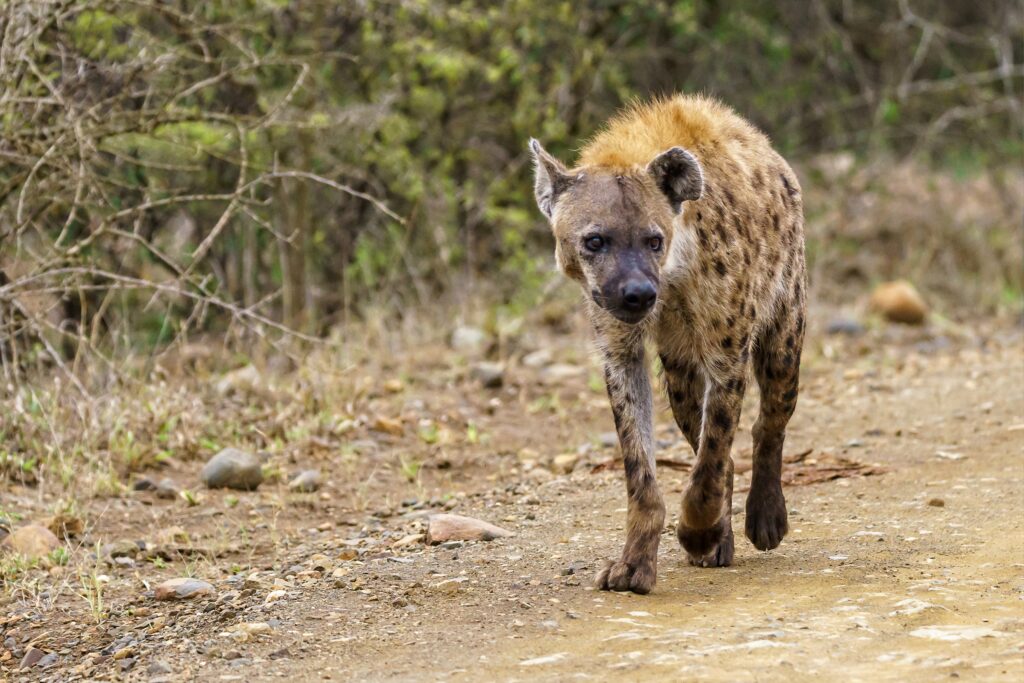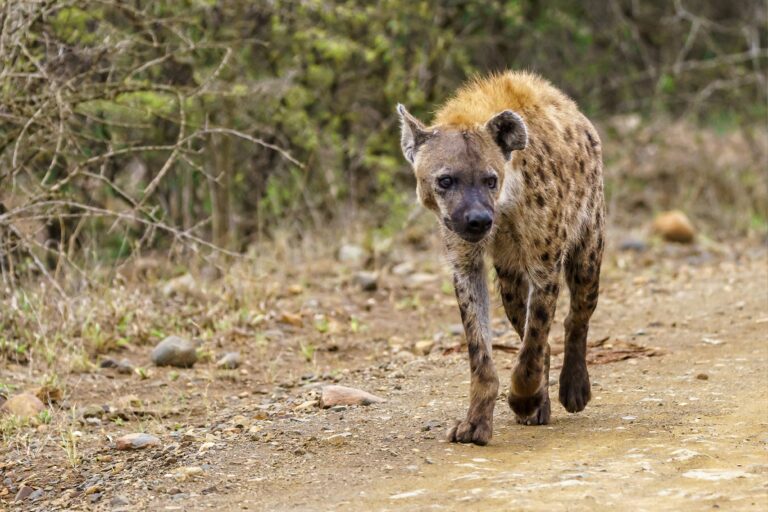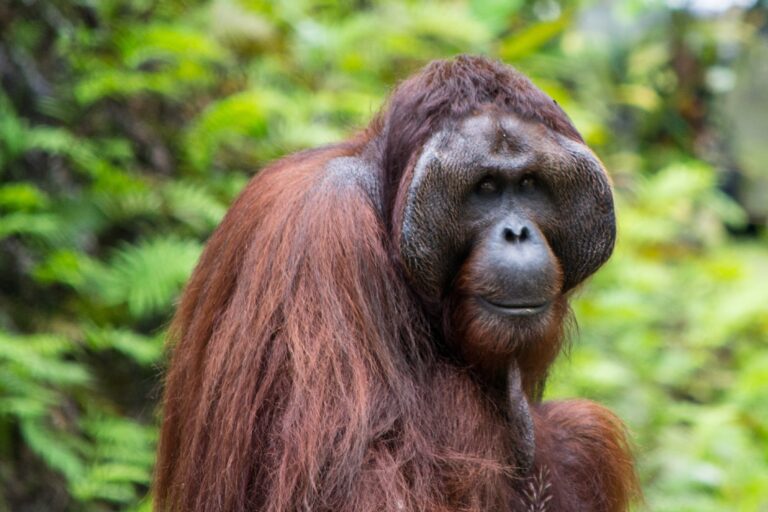
5 Fascinating hyena facts
Introduction
Hyenas, often misunderstood and overlooked, are among the most fascinating creatures in the animal kingdom. Found primarily in Africa, these wild animals, including the spotted hyena, brown hyena, and striped hyena, play a critical role in maintaining the balance of their ecosystems. From their unique laughter-like vocalizations to their complex social structures, hyenas are much more than just scavengers roaming the African savanna. In this blog, we will explore interesting facts about hyenas, their behavior, diet, and the various species that make up this remarkable family of predators.
We will also delve into topics like the threats facing hyenas today, the myths surrounding their portrayal in films, and even the idea of having a hyena as a pet. So, join us as we take a closer look at these captivating creatures and uncover why hyenas deserve a place in the spotlight!
fact 1: Hyenas Have a Unique and Complex Social Structure
Unlike most predators, hyenas, particularly the spotted hyena, live in matriarchal societies where females are the dominant members. This means that even the lowest-ranking female is more dominant than the highest-ranking male. Hyena clans, which can consist of up to 80 members, are organized around a strict social hierarchy. The alpha female leads the clan, and her offspring often inherit their mother’s high rank.
This complex social structure is one of the reasons hyenas are so successful in the wild. It allows them to coordinate hunting, protect their young, and defend their territory more effectively against other predators, such as lions. In a “hyena vs. lion” encounter, the social dynamics of a hyena clan often give them the edge in driving off larger, solitary predators from their kills.
Their social intelligence is comparable to that of some primates, making hyenas one of the most socially advanced animals in the animal kingdom.
fact 2: Hyenas Are Exceptional Hunters, Not Just Scavengers
Contrary to popular belief, hyenas are not merely scavengers. In fact, they are highly skilled hunters with a success rate that rivals even that of lions. The spotted hyena, for example, is known to hunt in groups, often coordinating their attacks to take down large prey such as wildebeests, zebras, and antelopes. This cooperative hunting strategy showcases their intelligence and teamwork, enabling them to capture prey much larger than themselves.
While their diet does include carrion, or dead animals, this is only a part of their diverse menu. The hyena diet also consists of small mammals, birds, and insects, and they are known to eat virtually every part of their kill, including bones and hooves, thanks to their incredibly strong jaws and digestive systems. This adaptability makes hyenas some of the most efficient predators in the savanna ecosystem.
Moreover, different species of hyenas have different dietary habits. For example, the brown hyena tends to scavenge more than the spotted hyena, while the striped hyena often feeds on smaller prey and carrion. This diversity in diet helps hyenas survive in a variety of habitats, from the savannas of Africa to the rocky deserts.

fact 3: Hyenas Have an Incredibly Powerful Digestive System
One of the most fascinating aspects of hyenas is their remarkable digestive system, which is specially adapted to handle a wide variety of foods. Hyenas have one of the strongest stomach acids of any mammal, allowing them to digest nearly every part of their prey, including bones, hooves, and even teeth. This unique adaptation not only provides them with extra nutrients but also ensures that very little of their kill goes to waste.
The ability to consume and break down bones is particularly beneficial in the wild, where food can be scarce. Hyenas’ powerful jaws can crush bones with ease, providing them access to the nutrient-rich marrow inside. The spotted hyena can generate a bite force of over 1,000 pounds per square inch, which is essential for cracking open the large bones of animals such as wildebeests and zebras.
Their efficient digestive system is so robust that it can process these tough materials within 24 hours. This capability allows hyenas to thrive in a variety of environments, from the African savanna to arid regions where other predators might struggle to find enough food. Even when food is scarce, hyenas can rely on their scavenging skills and exceptional digestion to sustain themselves.

fact 4: Hyenas Have a Wide Range of Vocalizations, Including Their Famous “Laughter”
One of the most recognizable traits of hyenas is their unique vocalizations, especially the high-pitched, giggle-like sound often referred to as “laughter.” But have you ever wondered, why do hyenas laugh? This distinctive sound isn’t actually a sign of amusement; instead, it serves as a form of communication within their clans. Hyena “laughter” often occurs when they are excited, frustrated, or when competing for food, signaling their social status or conveying specific information to other clan members.
Hyenas possess a wide range of vocalizations, including whoops, grunts, growls, and screams, each with a distinct purpose. For example, a series of “whoops” can be heard over several miles and is used to rally the clan together or announce the presence of a predator. These vocal abilities are not only fascinating but also vital for their survival on the African savanna, helping them coordinate during hunts or defend their territory against other predators.
Interestingly, each hyena’s “laugh” or vocalization is unique, allowing members of the same clan to recognize each other’s voices. This complex communication system demonstrates the intelligence and social complexity of hyenas, making them one of the most communicative mammals in the animal kingdom.
fact 5: Female Hyenas Have "Male-Like" Anatomy and Give Birth Through a Pseudo-Penis
One of the most shocking and unique facts about hyenas is their unusual reproductive anatomy. Female spotted hyenas possess what appears to be male genitalia, known as a pseudo-penis or an enlarged clitoris. This pseudo-penis is so anatomically similar to the male penis that it often confuses observers, including early scientists, who mistakenly thought that female hyenas were actually males.
Even more astonishing is that female hyenas give birth through this narrow pseudo-penis, a process that is extremely risky and can be dangerous for both the mother and her cubs. The birth canal is only about an inch in diameter, which often results in high mortality rates for first-time mothers and their offspring. Despite these challenges, female hyenas are remarkably resilient and are often the dominant, stronger members of their clans.
This unique trait is believed to be linked to the high levels of testosterone in female hyenas, which may give them their dominant behavior and larger size compared to males. This rare adaptation makes the hyena one of the few mammals where females are more muscular and aggressive than males, further cementing their place as one of the most fascinating species in the animal kingdom.

Conclusion: Embracing the Fascinating World of Hyenas
Hyenas are much more than the cunning scavengers they are often portrayed to be. From their complex social structures and powerful digestive systems to their unique vocalizations and surprising anatomy, hyenas are remarkable creatures that play an essential role in the ecosystems they inhabit. Despite the myths and misunderstandings surrounding them, these intelligent and adaptable predators deserve our respect and protection.
As we continue to learn more about hyenas and their behaviors, we uncover the critical part they play in maintaining the balance of the wild. So, the next time you think of hyenas, remember these five fascinating facts and appreciate them as nature’s resilient survivors, worthy of both awe and admiration. After all, understanding and conserving these incredible animals is not just crucial for them but also for the health of our planet.




